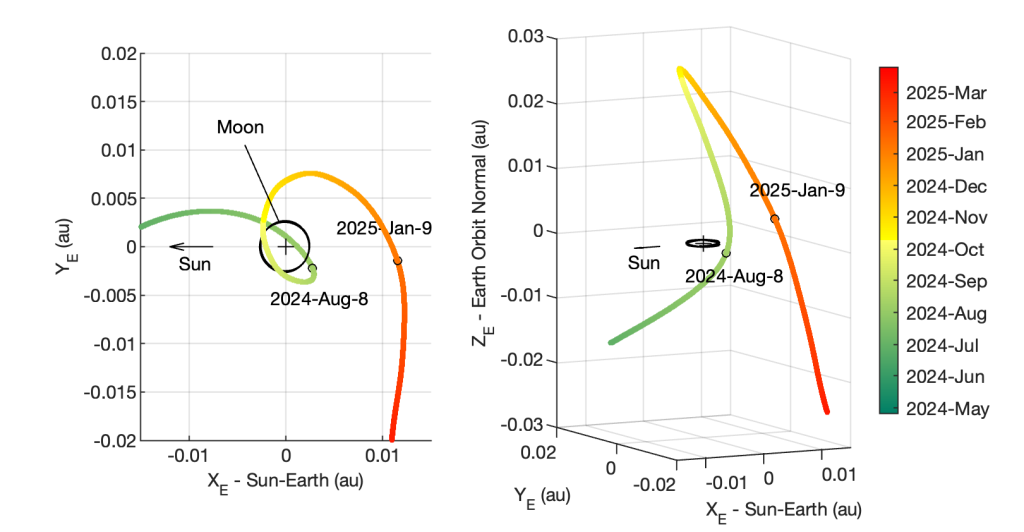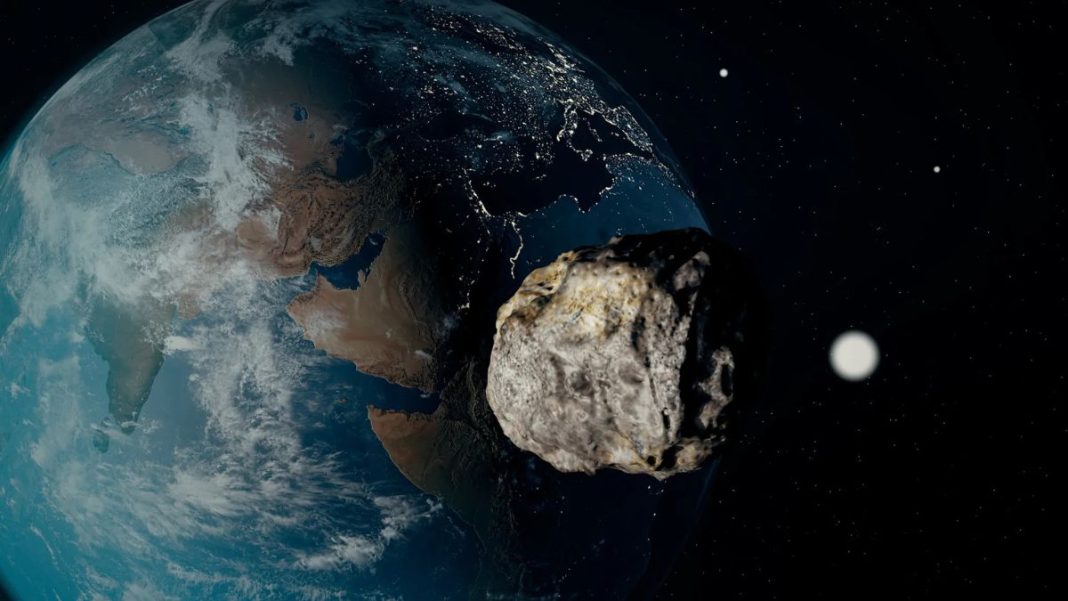A recently discovered near-Earth object, 2024 PT5, has captured global interest following its detection by a NASA-funded telescope. Scientists now believe this small asteroid, measuring approximately 33 feet (10 meters) wide, may have originated from the Moon, offering valuable insights into both asteroid and lunar research.
Lunar Origins Unveiled
According to a study published on January 14 in Astrophysical Journal Letters, researchers have gathered compelling evidence suggesting 2024 PT5 is a fragment of lunar rock. Scientists propose that the object was ejected from the Moon’s surface after a significant impact event thousands of years ago.
“We initially suspected a lunar origin, but the confirmation came when we identified silicate minerals typical of lunar rock samples rather than those commonly found in asteroids,” said Teddy Kareta, lead researcher and astronomer at Lowell Observatory in Arizona. “The lack of space weathering indicates that it has likely been in space for only a few thousand years.”
Discovery and Observations
2024 PT5 was first spotted on August 7, 2024, by the NASA-funded Asteroid Terrestrial-impact Last Alert System (ATLAS) telescope in Sutherland, South Africa. Follow-up observations conducted using the Lowell Discovery Telescope and the NASA Infrared Telescope Facility (IRTF) at Mauna Kea Observatory in Hawai’i revealed that the object’s reflected sunlight spectrum closely resembles lunar rock rather than known asteroid types.
Ruling Out Space Debris

Another factor that helped confirm the asteroid’s natural origin was an analysis of its motion. Human-made space debris, such as spent rocket boosters, reacts differently to solar radiation pressure compared to natural objects. This pressure, exerted by photons from the Sun, can cause lightweight objects to move more erratically.
NASA’s Center for Near-Earth Object Studies (CNEOS), based at the Jet Propulsion Laboratory (JPL) in Southern California, calculated 2024 PT5’s trajectory under gravitational forces and examined any additional influences from solar radiation. The object’s minimal response to sunlight pressure confirmed its higher density, ruling out the possibility of it being human-made debris.
“Human-made debris tends to be light and easily influenced by solar radiation, while 2024 PT5’s dense composition indicates its natural origin,” explained Oscar Fuentes-Muñoz, study coauthor and NASA postdoctoral fellow at JPL.
Implications for Lunar Science
The discovery of 2024 PT5 marks only the second asteroid believed to have originated from the Moon, with the first being asteroid 469219 Kamo’oalewa, discovered in 2016. As telescope technology improves, scientists expect to identify more lunar fragments in near-Earth space, potentially leading to new research opportunities.
Identifying the specific lunar crater from which 2024 PT5 originated could provide valuable insights into the Moon’s impact history and cratering processes. Additionally, studying lunar-origin asteroids could offer access to materials from beneath the Moon’s surface, providing new data for future lunar exploration missions.
“This discovery bridges asteroid and lunar science,” Kareta noted. “We set out to study an asteroid, only to uncover fascinating insights into the Moon.”
Future Prospects
The ATLAS, IRTF, and CNEOS projects are part of NASA’s planetary defense program, overseen by the Planetary Defense Coordination Office in Washington. As astronomers continue monitoring near-Earth objects, 2024 PT5 stands as an intriguing case of how lunar materials can travel through space and be studied from Earth.
By further studying 2024 PT5, scientists hope to unlock deeper knowledge about the Moon’s geological history and refine techniques for detecting similar lunar fragments in the future.

